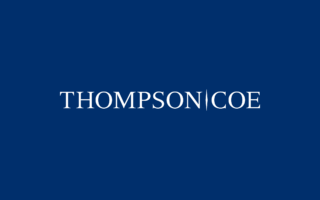Concurrent Causation Is Key In Texas Storm Insurance Suits
By Harrison H. Yoss • Dec 20, 2020 • In Law360
The 2020 Atlantic hurricane season, which ran from June 1 to Nov. 30, was a record-setting year according to the National Oceanic and Atmospheric Administration.[1]
The season produced 30 named storms, including 13 hurricanes and six major hurricanes.[2] Because of the catastrophic rainfall and flooding caused by many hurricanes, in addition to wind, causation is front and center in many hurricane claims and subsequent litigation.[3] Under the typical property insurance policy, wind damage is usually covered but flood and surface water damage are typically excluded.
Concurrent Causation at Common Law
Causation is the central factor in property insurance coverage determinations. Most property-related claims have only one cause (e.g., hail or windstorms). In those instances, causation is relatively straightforward.
Causation is more complicated, however, when dealing with catastrophic weather events where damage may result from different causes. Causation is further complicated when weather events, such as hurricanes, may cause substantial delays between the loss and recovery
efforts, let alone inspection by an adjuster or an engineer.
At common law in Texas, the doctrine of concurrent causation, or concurrent causes, existed when both covered and excluded perils combined to cause a loss and the causes could not be separated.[4] The exclusions were triggered, and there was no coverage. If a covered and an excluded peril each independently caused the loss, however, then there was coverage despite the exclusion.
Hence, a policyholder was entitled to coverage for damage caused solely by the covered peril.[5] To avoid summary judgment on the exclusion, a policyholder had only to present evidence of a reasonable basis upon which a jury could allocate damages. This burden could be met through expert testimony or even circumstantial evidence in some cases.[6]
In effect, concurrent causation was frequently a fact question, which usually precluded summary judgment. Nevertheless, Texas courts are clear that some evidence of a reasonable basis for estimating the proportionate part of damage caused by a covered event is necessary.
For example, in Starco Impex Inc. v. Landmark American Insurance Co., the U.S. District Court for the Eastern District of Texas recently granted summary judgment in a case arising out of Hurricane Harvey when the summary judgment record established that there were prior repairs to the interior of a property and the plaintiff did not point to evidence to segregate covered damage from noncovered or excluded damage.[7]
Anti-Concurrent Causation Clauses
In most cases, however, the common law approach is essentially academic because most, if not all, property insurance policies now include anti-concurrent causation clauses, which contract around the common law approach.
The typical language provides that an excluded peril is not covered “regardless of any other cause or event contributing concurrently or in any sequence to the loss.”[8] Other common language includes: “We do not insure for such loss regardless of … whether other causes acted concurrently or in any sequence with the excluded event to produce the loss.”[9]
Anti-concurrent causation clauses have been read to preclude coverage for all damage except those caused exclusively by a covered cause.[10] For example, in Leonard v. Nationwide Mutual Insurance Co., the U.S. Court of Appeals for the Fifth Circuit considered the synergistic cause and sequential aspect of a policy’s anti-concurrent causation clause, explaining:
The fatal flaw in the district court’s rationale is its failure to recognize the three discrete categories of damage at issue in this litigation: (1) damage caused exclusively by wind; (2) damage caused exclusively by water; and (3) damage caused by wind “concurrently or in any sequence” with water. The classic example of such a concurrent wind-water peril is the storm-surge flooding that follows on the heels of a hurricane’s landfall. The only species of damage covered under the policy is damage caused exclusively by wind. But if wind and water synergistically caused the same damage, such damage is excluded. … If, for example, a policyholder’s roof is blown off in a storm, and rain enters through the opening, the damage is covered. Only if storm-surge flooding—an excluded peril—then inundates the same area that the rain damaged is the ensuing loss excluded because the loss was caused concurrently or in sequence by the action of a covered and an excluded peril.[11]
Notably, the Fifth Circuit in Leonard applied a textual and formalistic approach to interpreting and applying the anti-concurrent causation clause.
In the seminal case of JAW The Pointe LLC v. Lexington Insurance Co., the Texas Supreme Court analyzed an anti-concurrent causation clause in the context of a Hurricane Ike insurance claim and subsequently approved of the Fifth Circuit’s approach from Leonard.[12]
In that case, the insured property sustained damage caused by wind, which was covered, and flooding, which was excluded. The policy also contained an endorsement that provided coverage for the cost to comply with city ordinances, but only if a covered loss caused the enforcement of the ordinance or law.
Because the property had sustained damage equal to or exceeding 50% of its market value, a city ordinance required that the property be elevated by 3 feet to comply with current code requirements. Litigation ensued regarding the cost to comply with the ordinance.
The court held that “the evidence conclusively established that the damage [to the property] included both wind damage and flood damage, and that the city based its decision to enforce the ordinances on the combined total of the two.”[13] The court held that because covered and excluded losses combined to cause the enforcement of the ordinances, the policy’s anti-concurrent causation clause excluded coverage.
Moreover, federal courts applying Texas law have found that anti-concurrent causation clauses may foreclose coverage even if all causes of damage cannot be ascertained. For example, in Bilotto v. Allied Property & Casualty Insurance Co., the insured property was damaged by a plumbing leak, which was a covered peril.[14]
Expert evidence, however, also showed that the leaks were associated with multiple excluded perils. The insurer moved for summary judgment on the policy’s anti-concurrent causation clause, and the policyholder argued that a fact issue existed regarding some of the possible concurrent causes.
Nevertheless, the court concluded that the anti-concurrent causation clause applied and foreclosed coverage because some of the identified causes fell within the policy’s anti- concurrent causation clause.
Moving Forward
As insurers address 2020 hurricane season claims, they should consider anti-concurrent causation clauses during their initial coverage determination and subsequent litigation, if any.
Moreover, the lack of temporal limitations in the typical policy language arguably means that the excluded damage could occur hours, days, weeks or potentially even months later. No Texas cases have directly considered the permissible length of time between the covered and excluded causes when applying anti-concurrent causation clauses, and it is probable that policyholders would argue that the lack of a limitation makes the clause ambiguous.
However, Texas case law supports that, at least, several days may lapse between multiple causes. For example, in Travelers Indemnity Co. v. McKillip, the Texas Supreme Court reversed and remanded a case because the trial court failed to allocate damages between a covered cause (i.e., windstorm) and a noncovered cause (i.e., snowstorm) that occurred six days later.[15]
Although McKillip dealt with the common law standard, the court’s opinion is illustrative that the causes may occur approximately a week later. Thus, insurers should be mindful of the different causes of damage, even if there are several days between them.
In our experience, some policyholders misconceive that they can segregate their damages, even when an anti-concurrent causation clause is included in their policy. A common example of this is a policyholder trying to apportion the cost to repair the interior of a building when the interior was damaged by water entering through a storm-caused opening in the roof (i.e., a covered peril) and then subsequently flooded the following day (i.e., an excluded peril).
In that example, the anti-concurrent causation clause would exclude coverage for the interior damage because it was caused by both perils. Another example is a policyholder making a claim for loss of business income when the interruption was caused by both damage to business personal property as a result of a covered peril and damage to the interior of the property caused by an excluded peril.
In the second example, because the loss of business income was caused by both a covered and excluded peril, the anti-concurrent causation clause would preclude coverage for the loss.
In those instances, clearly explaining the application of the anti-concurrent causation clause in prelitigation correspondence may ward off potential litigation.
When policyholders nevertheless do file suit against their property insurer, motions for summary judgment are well-suited to resolving this coverage issue. In such cases, even though the policyholder bears the initial burden of proof regarding coverage, establishing the cause or causes of the damage — at least the excluded ones — will be equally important for the property insurer.
Further, locking down a policyholder’s testimony regarding a catastrophic weather event and its effects early in litigation — if not presuit — is paramount because the insured’s story will inevitably shift during litigation.
Presuit examinations under oath can be effective in this area if counsel is retained by an insurer early in the claims process. Likewise, a comprehensive investigation and sufficient documentation by the field adjuster is equally important to ensure that the policyholder’s story stays consistent.
In conclusion, catastrophic weather events present significant coverage challenges and unique coverage issues, which are important to remember as insurers address the effects of a record-setting 2020 hurricane season. Anti-concurrent causation clauses are an important tool.
If a dispute nevertheless progresses to litigation, a policy’s anti-concurrent causation clause may provide a useful avenue for resolving litigation in an efficient manner. Accordingly, it is important for property insurers to incorporate their policies’ anti-concurrent causation clause into an overall case strategy as early as possible in hurricane-related claims.
[1] Record-Breaking Atlantic Hurricane Season Draws To An End, Nat’l Oceanic &
Atmospheric Administration, U.S. Dep’t of Com. (Nov. 24,
2020), https://www.noaa.gov/media-release/record-breaking-atlantic-hurricane-season-
draws-to-end.
[2] Id.
[3] See Pan Am Equities, Inc. v. Lexington Ins. Co., 959 F.3d 671, 672 (5th Cir. 2020)
(“Hurricane Harvey was the second-costliest natural disaster in U.S. history, ranking just
behind Hurricane Katrina. Harvey claimed 68 lives and inflicted $125 billion in damage,
mostly from catastrophic flooding as the slow-moving storm, the wettest on record, stalled
over southeast Texas, dumping up to 60″ of rain over four days.”).
[4] See Allison v. Fire Ins. Exch., 98 S.W.3d 227, 258 (Tex. App.—Austin 2002, pet.
granted, judgm’t vacated w.r.m.); Wallis v. United Servs. Auto. Ass’n, 2 S.W.3d 300, 302
(Tex. App.—San Antonio 1999, pet. denied).
[5] Farmers Group Ins., Inc. v. Poteet, 434 S.W.3d 316, 325 (Tex. App.—Fort Worth 2014,
pet. denied); Wallis v. USAA, 2 S.W.3d 300, 302-303 (Tex. App.—San Antonio 1999, pet.
denied).
[6] See One Way Investments, Inc. v. Century Surety Co., No. 3:14-CV-2839, 2016 WL
5122124 (N.D. Tex. Sept. 21, 2016) (granting summary judgment because the insured
failed to provide any evidence that would enable a reasonable jury to estimate or allocate
the amount of damage or the proportionate part of damage caused by a covered cause of
loss); Presswood v. Allstate Vehicle & Prop. Ins. Co., No. 4:16-CV-00958, 2017 WL
7051074, at *4 (E.D. Tex. Aug. 11, 2017) (noting “it is only where the insured cannot
produce any evidence at all with regard to allocation that his claims are subject to judgment
as a matter of law on that basis”).
[7] No. 1:19-CV-39, 2020 WL 3442842, at *6 (E.D. Tex. June 3, 2020), adopted by 2020
WL 3440575 (E.D. Tex. June 23, 2020).
[8] See, e.g., Lexington Ins. Co. v. Unity/Waterford-Fair Oaks, Ltd., No. 399-CV-1623-D,
2002 WL 356756, at *4 (N.D. Tex. Mar. 5, 2002).
[9] Bilbe v. Belsom, 530 F.3d 314, 316 (5th Cir. 2008).
[10] ARM Prop. Mangament Grp. v. RSUI Indemn. Co., No. A-07-CA-718-SS, 2009 WL
10669487, at *4 (W.D. Tex. Feb. 23, 2019) (quoting Leonard v. Nationwide Mut. Ins. Co.,
499 F.3d 419, 430 (5th Cir. 2007)).
[11] Leonard, 499 F.3d at 430-31 (applying Mississippi law).
[12] 460 S.W.3d 597 (Tex. 2015).
[13] Id. at 607.
[14] 79 F. Supp. 3d 660 (W.D. Tex. 2015).
[15] 469 S.W.2d 160 (Tex. 1971).






